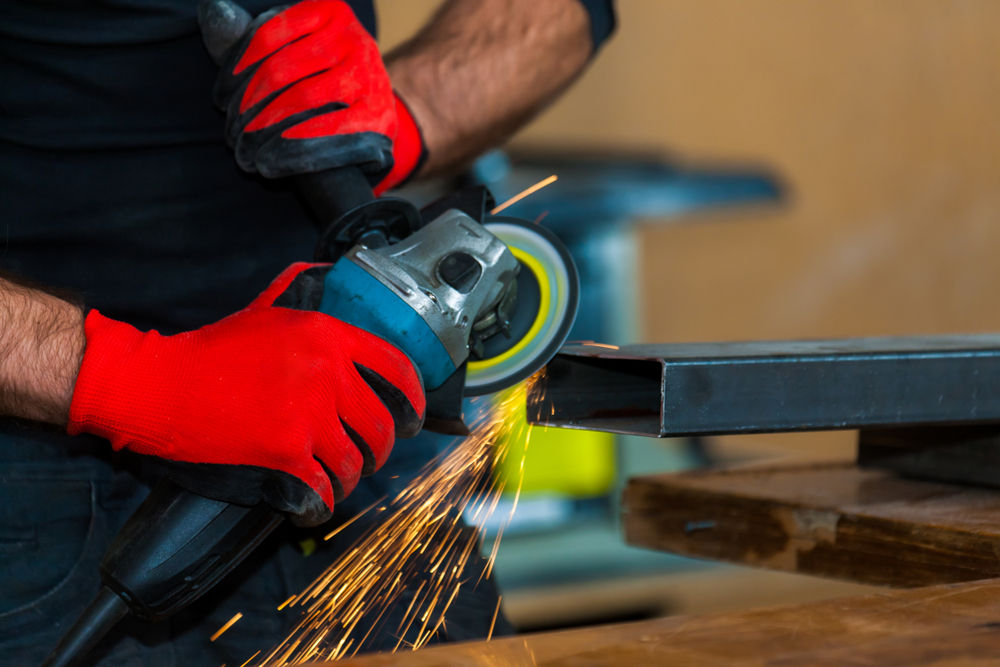
Cut injuries are a crucial topic that every worker should be aware of. 30% of all U.S. workplace injuries are associated with cuts and lacerations, and from that group, 70% are related to hands and fingers. These injuries can cause permanent damage, affecting the lives of the workers. Many of the injuries come about from bad practices or lack of training, which is why teaching your workers the importance of cut prevention is essential. This blog will go over a few safety tips that all workers should know in order to prevent cut injuries.
Avoid Potential Hazards
Not all cut injuries happen due to improper use of tools. Everything from the worker’s overall physical state to the workplace environment can play a role. Potential issues that could lead to work injuries include:
- Fatigue
- Poor training
- Rushed work environment
- Cluttered workspace
- Paying little attention to instructions
- Limited visibility
- Outside distractions
- Dangerous surface conditions
It’s your job to ensure that the workplace environment is safe. Don’t allow workers to work if the environment isn’t safe or if the worker isn’t in condition to work. Train the workers to properly handle hazardous tools and safely handle the task at hand.
Inspect the Tools Before Use
Often, the issue is caused by either using the incorrect tool or the tool being in bad condition. Before using tools, inspect the tools to ensure that they are in good condition and are properly assembled. Inspecting the tools will help identify whether work equipment can be operated, adjusted, and maintained safely, with any deterioration detected and remedied before it results in a safety risk.
Wear Safety Gloves
Safety gloves may just be one of the most vital pieces of personal protective equipment in the workplace. Cut-resistant gloves are designed to prevent cuts and lacerations, or at least significantly reduce the damage. There are certain levels that indicate how much “grams of cutting load” the gloves can withstand. The American National Standards Institute (ANSI) provides ratings for cut-resistant gloves, which consists of these nine levels:
- A1: 200 – 499 grams
- A2: 500 – 999 grams
- A3: 1000 – 1499 grams
- A4: 1500 – 2199 grams
- A5: 2200 – 2999 grams
- A6: 3000 – 3999 grams
- A7: 4000 – 4999 grams
- A8: 5000 – 5999 grams
- A9: 6000+ grams
When looking for the glove specifications, the ANSI cut level ratings can be seen inside a badge that resembles a shield. The more hazardous the tool/task, the higher the rating of the glove should be.

Personal Awareness
Being aware of your surroundings can go a long way towards preventing workplace cut injuries. Cluttered workspaces can pose a huge hazard as well as dirty, slippery, sticky floors. In addition, jutting equipment that’s not safely stored can lead to tripping, which, in turn, could result in cuts and lacerations. Loud and rowdy work environments also pose a hazard to all workers. Thus, it’s important to teach your workers the habit of being aware of their surroundings at all times. Maintaining good physical health along with getting adequate sleep can make all the difference.
Host Safety Meetings
Hosting regular safety meetings is a great way of informing the workers on the importance of avoiding cuts and lacerations in the workplace. A few tips on safe practices, along with regular reminders, can make all of the difference. Instill confidence in your employees, show them a few stretches or simple exercises to do before every shift. Loosening up the body will prevent cramping or pulled muscles. Addressing the importance of self-care is also an imperative topic. Staying hydrated, eating healthy food, and maintaining a regular sleep schedule make for a healthy, more productive worker that is less likely to fall victim to an injury.
Preventing injuries on the job site is something that all workers should have in mind. That’s why teaching your workers the importance of cut prevention is vital. We hope this blog helped inform you on a few safety tips to prevent cut injuries. Providing workers with the proper PPE is one of the best ways to prevent serious cuts or lacerations. To purchase cut-resistant gloves and other PPE for your workers, give Extreme Safety a call at (310) 856-0166 or click here.

















